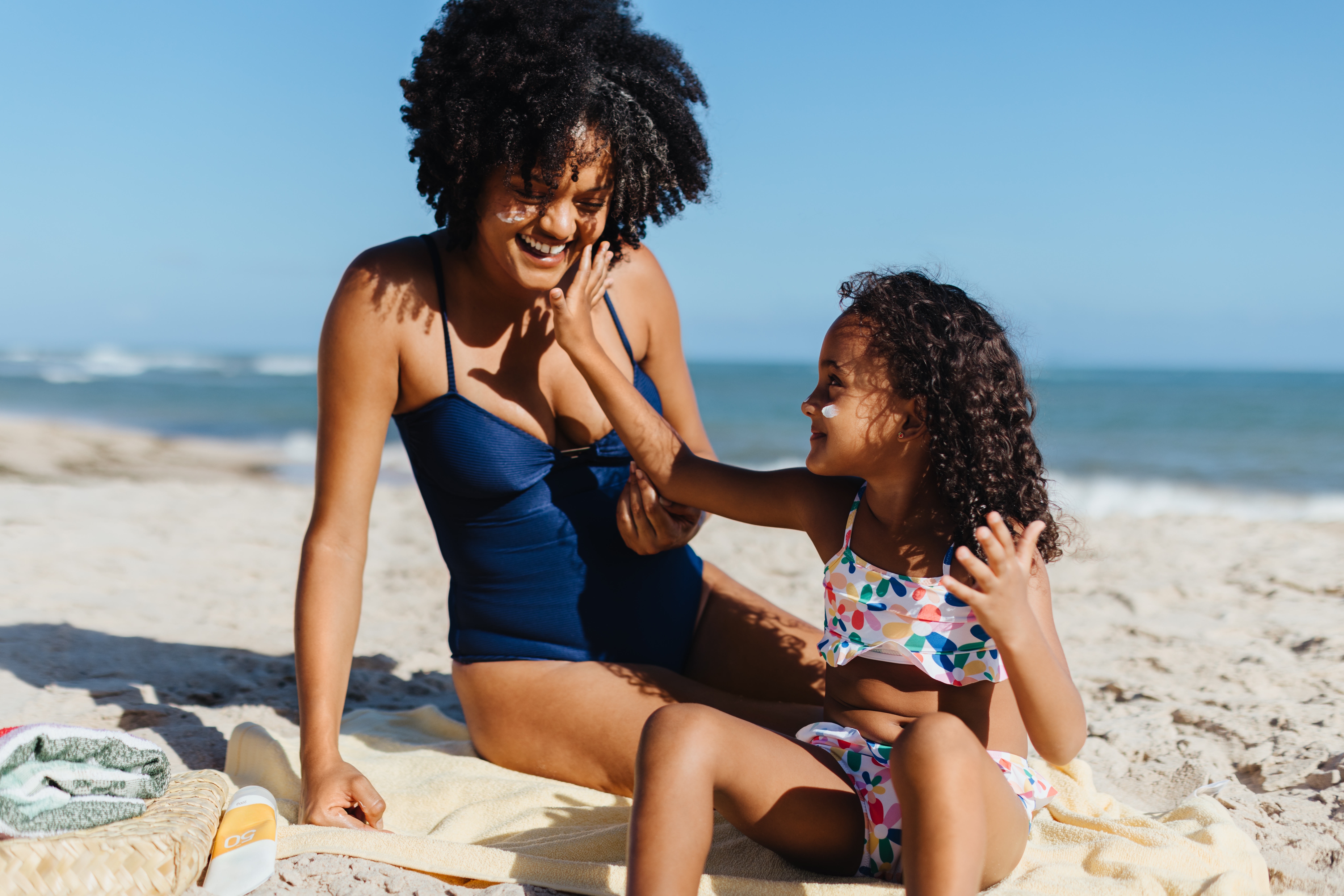Beach excursions are often the highlight of a cruise vacation, until they’re not. From scorching sun with no shade to surprise cash-only vendors, it’s easy for a picture-perfect beach day to unravel fast if you’re not prepared.
After dozens of family cruises that included beach stops at everything from luxurious resorts to remote stretches with zero amenities, I’ve learned (sometimes the hard way) which items help you make the most of your day ashore. Like the time we ended up stranded under a blistering sun in the Caribbean because we had no cash for chairs or shade. That lesson? Never leave the ship without small bills.
This post goes beyond the generic swimsuit-and-sunscreen checklist. You’ll find the real beach essentials families need for comfort, safety, and convenience. Plus a few clever extras, many experienced cruisers like to pack. If you want to enjoy your beach time without stress, read on.
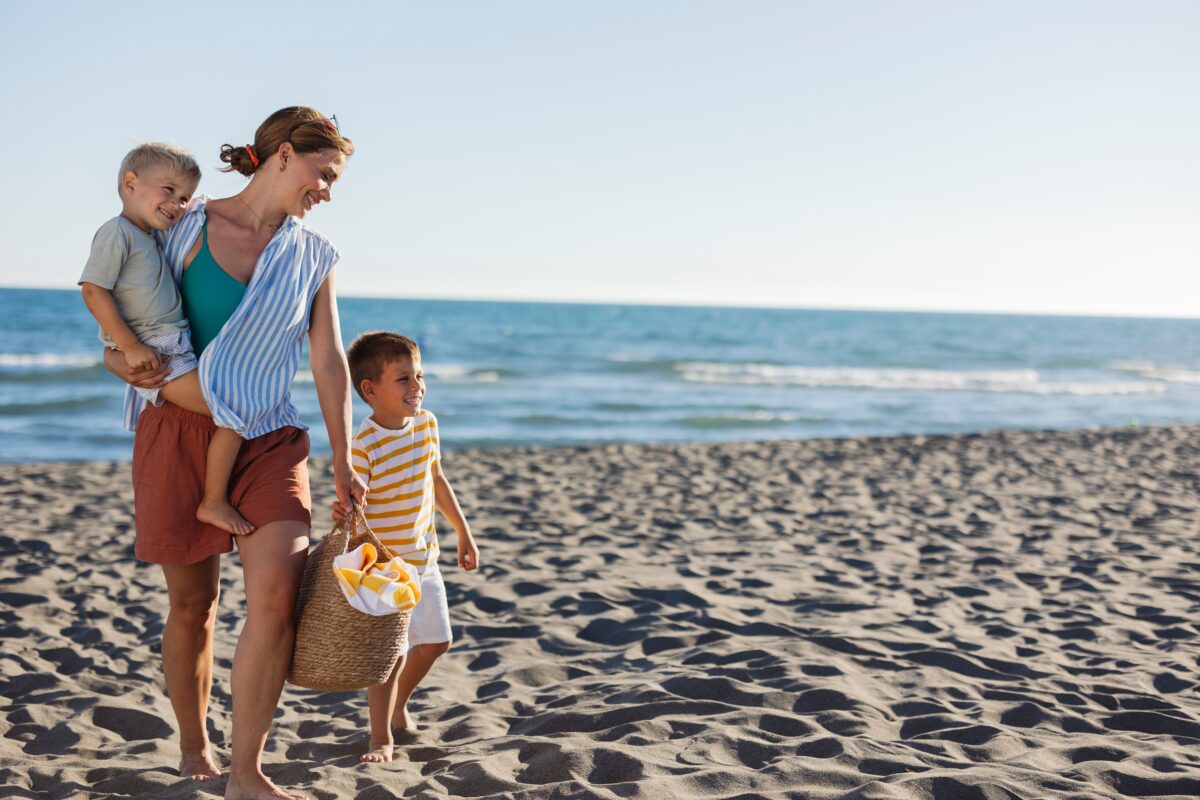
Money and Logistics Beach Essentials
1. Small Bills in Local Currency or USD
Your cruise card is gold on the ship, but almost useless once you step onto the sand (unless you’re on the cruise line’s private island). Many beach vendors, taxi drivers, and chair rental operators only accept cash. And even in destinations where cards are technically accepted, it’s common for machines to be down or for a minimum spend to apply.
For most Caribbean and Mexican ports, the U.S. dollar is widely accepted. But small denominations matter. Think $1s, $5s, and $10s. It’s much easier to buy a $3 coconut without needing change for a $20 bill. Also, change is often returned in local currency, so smaller bills reduce the amount of currency you don’t really need. In Europe or Asia, where USD is hit or miss, a few local notes can make or break your day.
My personal non-negotiable? Getting change from the casino or guest services before any beach day. After a scorching afternoon in Grand Cayman with no cash for a shaded seat, I learned this lesson the hard way.
2. Printed Port Instructions and a Cruise Card Holder
Cell service can be spotty in port, and relying on your phone can backfire fast if the battery runs low. Especially true during long beach days! That’s why it’s smart to carry a printed copy of the most critical information: ship departure time, terminal location, and emergency contact details.
An easy way to do this? Grab the printed version of your ship’s daily cruise planner. While many cruise lines now default to digital-only access via their app, you can typically request a hard copy from guest services. Tuck it into a waterproof holder along with your cruise card. Bonus points if the holder is lanyard-style for hands-free convenience.
This small prep step becomes a lifesaver if your phone dies or the app glitches, especially in tender ports where you’re expected back by a specific time.

This post contains affiliate links that could result in a commission to this website (at no additional cost to you). Visit our Disclosures Page for more information.
Weather and Environmental Protection
3. Reef-Safe Sunscreen (Travel Size)
Some of the most stunning beach destinations, such as St. Thomas, Bonaire, and Aruba, have restrictions or outright bans on sunscreens containing oxybenzone and octinoxate due to their harmful impact on coral reefs. That means your usual sunscreen may not only be discouraged, but it may also be illegal to use.
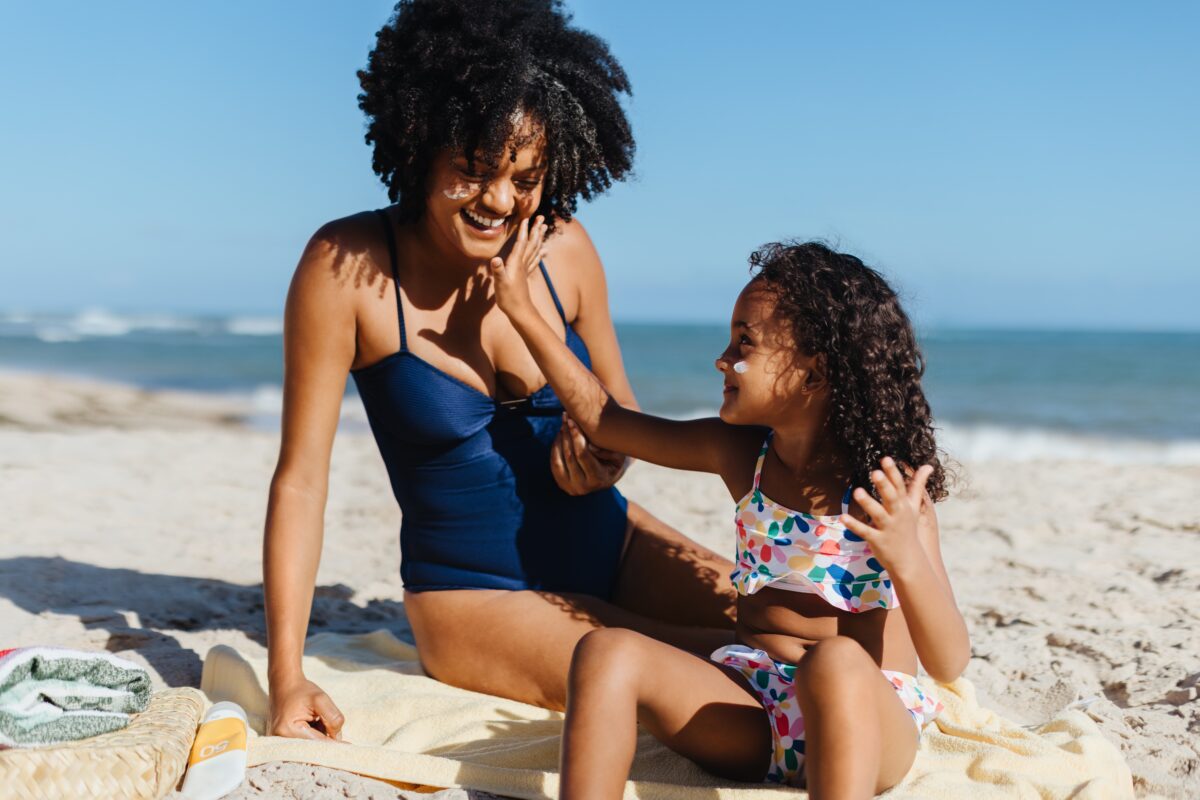
To avoid fines or environmental damage, pack a reef-safe sunscreen before your cruise. Look for travel-sized options that are easy to carry ashore. Solid stick formulations are especially convenient. They won’t leak, are TSA-approved, and allow for quick reapplication without the mess.
Don’t rely on port shops to stock reef-safe products. They are almost always overpriced and often sold out.
4. Lightweight Hat or Neck Gaiter
Beach days in tropical ports often mean hours in direct sunlight with limited shade options. A good hat provides crucial protection for your face, ears, and neck. These areas burn quickly and are tough to keep covered with sunscreen alone.
Look for packable, crush-resistant styles that can survive being stuffed in your beach bag without losing shape. A hat with a chin strap is ideal for windy boat rides or breezy coastlines. For folks who dislike hats, some travelers swear by neck gaiters. They can offer flexible sun protection (some with “cooling” features) and can double as a scarf, head wrap, or even a face covering when needed.
5. Insect Repellent Wipes or Spray
Tropical destinations are beautiful, but sometimes they also come with bugs. Mosquitoes and sand flies are especially common near mangroves, lagoons, and forested paths. They’re most active around dawn and dusk, but some ports deal with them all day.
I recommend individually packaged repellent wipes. They’re compact, mess-free, and easy to apply right where you need them, without spraying chemicals into the breeze or onto fellow beachgoers.
Beach-Specific Problem Solvers
6. Compact Beach Tote or Foldable Backpack
You’ll need something practical to carry your beach-day essentials from ship to shore. While cruise lines often provide a tote bag at embarkation, these freebies are rarely up to the task, and they quickly become annoying when filled with sand or soaked by wet gear.
A dedicated beach bag that folds flat for easy storage in your cabin is ideal. Look for one made of water-resistant material with separate compartments for wet and dry items to keep everything organized. (We use this extra-large version that is versatile and has held up for many years.)
- LARGE CAPACITY: Bag measures 20.2×7.8×15.7 inches. Main compartment is spacious enough to fit…
- MULTIPLE STORAGE: Features 1 water-resistant translucent pocket inside to store wet swimsuits and…
- SMART DESIGN: Bottom zipper opening design makes it easy to shake sand out quickly. No more sand in…
7. Wet Bag or Waterproof Stuff Sack
After a swim in the ocean or splashy beach play, you’ll need somewhere to stash wet swimsuits and towels, without soaking the rest of your bag. A dedicated wet bag or waterproof stuff sack keeps your dry items safe and makes repacking a breeze.
While a plastic grocery bag can work in a pinch, a reusable waterproof version with a roll-top or zip seal is more reliable and more eco-friendly. It’s also great for protecting your electronics if a surprise rain shower rolls in.
8. Backup Swimsuit or Dry Undergarments
It might sound excessive until you’ve spent an hour on a shuttle bus in wet swimwear. A change of clothes, even just dry undergarments, can mean the difference between feeling salty and soggy… or clean and comfortable for your ride back to port.
For families, this is especially important. Kids are prone to chafing and discomfort after a long beach day, and a quick change keeps everyone happier heading into the next activity.
9. Water Shoes or Grippy Sandals
While some cruise ports feature pristine sandy beaches, others have rocky or coral-strewn entries that can be painful on bare feet. Destinations like parts of Greece, St. Thomas, and Montenegro often boast beautiful but less forgiving shorelines.
Quality water shoes or sandals with good traction serve double duty: they protect your feet in the water and offer comfortable, sand-free footwear afterward.
Comfort and Convenience Beach Essentials

10. Baby Powder or Sand-Removing Mitt
Sand is great until it follows you back to the ship. A quick dusting of baby powder on sandy feet and legs helps the grains slide right off, leaving your skin clean and dry. For an even easier solution, some experienced cruisers swear by a sand-removing mitt, which is reusable and less messy.
This little trick is a lifesaver for families. No one wants to board a tender boat with gritty skin or deal with cranky kids covered in sand during the ride back to port.
11. Portable Phone Charger
Your phone does a lot on beach days: navigation, port maps, photos, communication, cruise apps… the list goes on. All that activity drains your battery fast, especially under the tropical sun.
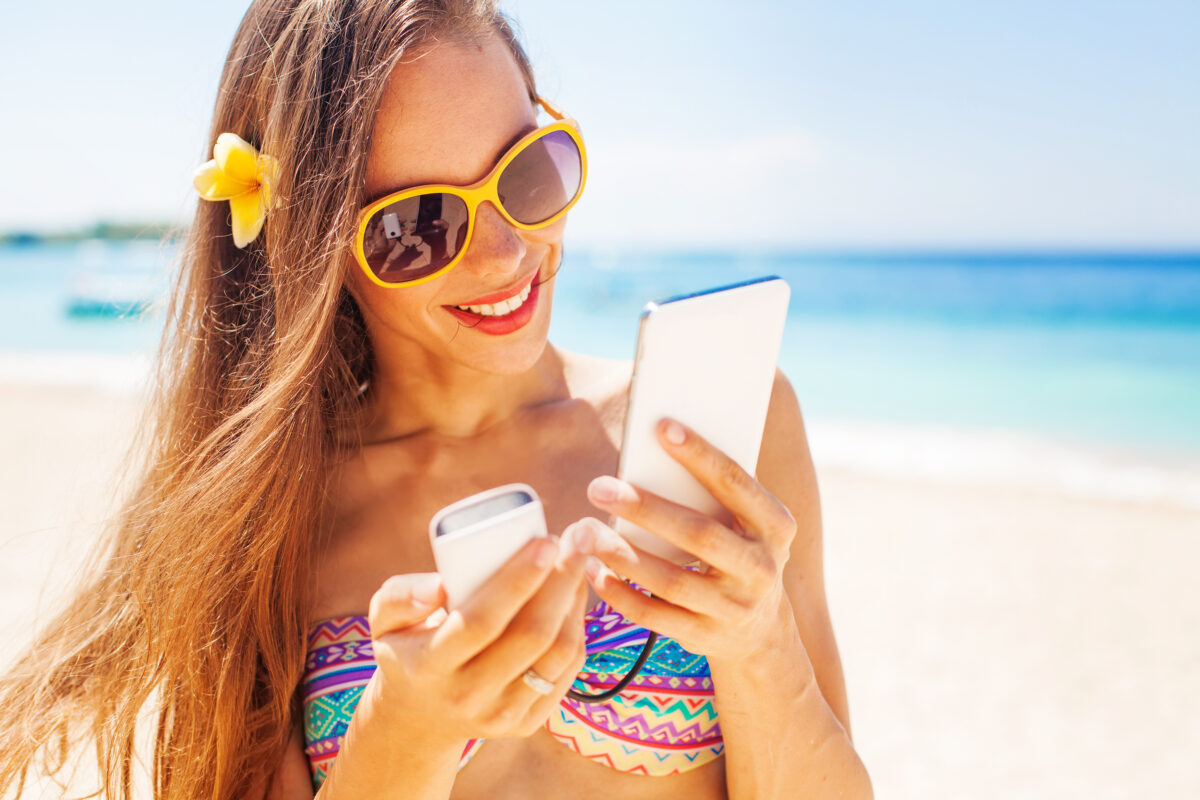
I recommend a portable charger or power bank with at least 10,000mAh capacity for reliable, all-day performance. Even better? Choose one with built-in cables. It’s one less thing to keep track of and makes recharging on the go as easy as plugging in.
12. Collapsible Water Bottle
Beach vendors know you’re thirsty—and they charge accordingly. Bottled water in tourist-heavy areas can easily run $5 or more per bottle.
Bring a collapsible water bottle and fill it at the ship’s water stations before heading ashore. It keeps you hydrated, folds flat when empty, and helps reduce single-use plastic waste.
13. Travel Wipes or Mini Hand Sanitizer
Not every beach has restrooms, and the ones that do might not stock soap or paper towels. Having your own sanitizing option means you can clean up before eating, after using the facilities, or when sticky little hands need attention.
Individually wrapped wipes are especially versatile—they double as quick face refreshers, stain removers, or clean-up tools for small messes.
14. Travel Toilet Paper or Tissues
This small item can be a true lifesaver in beach restrooms that are unstocked or charge for paper. A compact travel roll of toilet paper or a purse-sized tissue pack takes up almost no space but provides significant peace of mind.
Another smart option? Grab a tissue box from your cabin. It’s a bit bulkier, but you’ll be grateful if you find yourself in a stall with no supplies, and you may end up sharing with fellow cruisers in the same situation.
Bonus Beach Essentials Experienced Cruisers Recommend
15. Compact Beach Mat
Not every beach offers chair rentals, and during peak season, they can sell out quickly. A lightweight, sand-resistant beach mat provides a comfortable place to sit, regardless of the local setup. It also doubles as a layer of sun protection for items in your bag that you’d rather not leave exposed on hot sand.
Beach mats fold down easily and are especially helpful at crowded public beaches where seating is limited or nonexistent.
16. Towel Clip Set
Cruise ship towels have a habit of catching the wind and flying off just when you’re trying to relax. Towel clips or bands keep your towel secured to your beach chair, bag, or railing. They’re small, inexpensive, and incredibly useful—especially when breezes pick up near the water.
Some seasoned cruisers even bring themed or color-coded clips to help their chairs stand out on busy beaches.
17. Polarized Sunglasses
Standard sunglasses reduce brightness, but polarized lenses go a step further by cutting the glare that reflects off water surfaces. This makes them ideal for beach days—whether you’re relaxing on the sand, supervising kids near the shoreline, or taking in the view from a boat or tender.
Polarized lenses help you see more clearly into the water, reduce eye strain, and allow you to fully appreciate those stunning turquoise hues that make tropical cruising so special. They’re a worthwhile upgrade from standard lenses, especially in bright, reflective environments.
18. Waterproof Phone Case or Pouch
Your smartphone is your camera, map, translator, and connection to the ship—and it’s surprisingly vulnerable on beach days. Between sea spray, sand, and accidental drops, the risk is real.
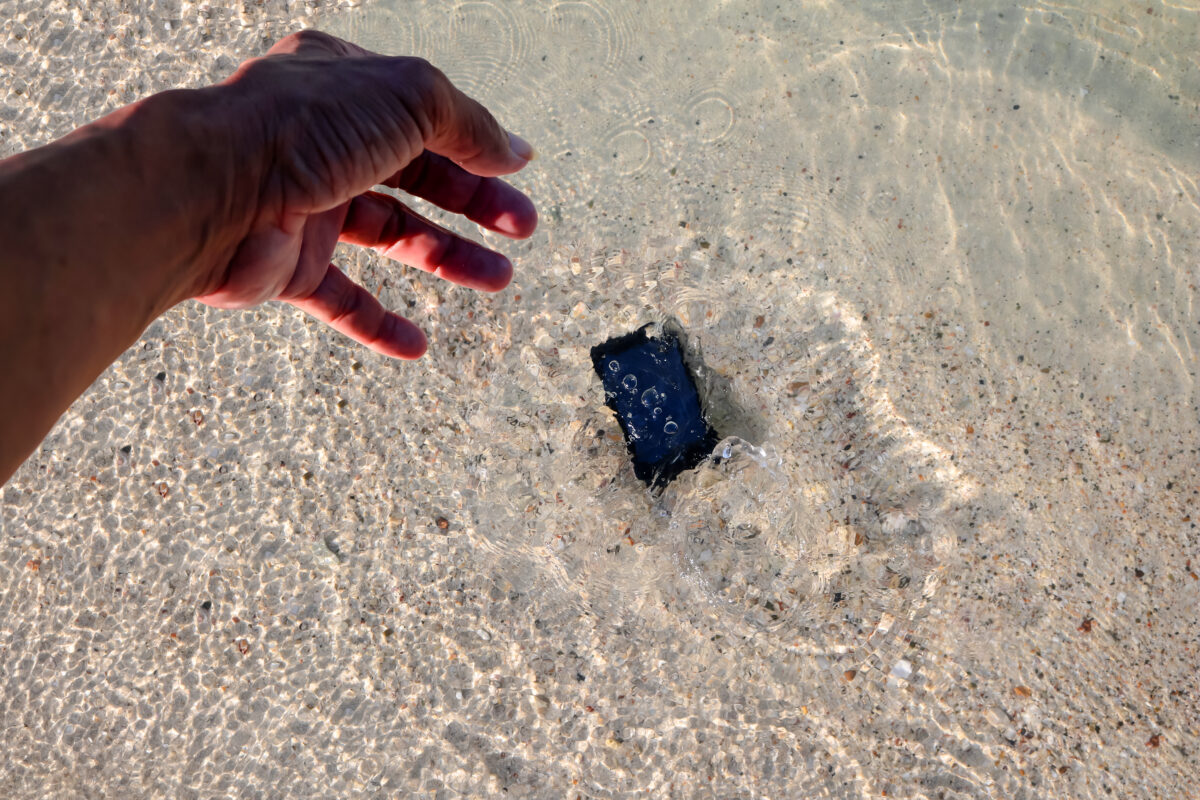
A waterproof pouch or case with a neck strap or wrist loop keeps your phone protected and accessible. Look for one that allows touchscreen use while sealed, so you can still snap photos or check maps without removing it.
19. Insulated Snack Container
For families—or really anyone planning a long port day—having fresh, kid-friendly snacks can prevent meltdowns and save money. A small insulated container keeps fruit, sandwiches, or baby snacks cool and safe to eat, even after hours in the heat.
This is especially useful at beaches without food vendors or when you’d prefer to skip overpriced, sugary beach snacks.
Creating Your Perfect Beach Day Kit
To simplify your port day routine, consider assembling a pre-packed beach kit that stays ready throughout your cruise. Store it in a gallon-sized ziplock bag, packing cube, or small pouch—whatever fits neatly in your cabin and transfers easily into your day bag.
Here’s what a streamlined kit could include:
- Reef-safe sunscreen
- Foldable hat
- Waterproof phone case or pouch
- Hand sanitizer or travel wipes
- Small bills in USD or local currency
- Baby powder or sand-removing mitt
- Towel clips
- Hair ties or clips
- Travel tissues or toilet paper
- Wet bag for swimsuits and towels
- Polarized sunglasses (optional beach pair)
- Insulated snack container (if space allows)
Having this kit prepared means you won’t be rushing around on port mornings trying to remember everything, especially when you’re juggling kids, beach bags, and a ticking clock to catch that early tender.
Closing Thoughts
Beach excursions can be the highlight of your cruise (or the most frustrating part) depending on how well you’re prepared. By packing a few thoughtful extras and building a ready-to-go beach kit, you’ll sidestep common hassles like sunburns, soggy gear, or cash-only surprises.
A little preparation makes a big difference and ensures your day at the beach feels like a vacation, not a scramble.

Elaine Warren
Founder & Crew Chief
Elaine founded this website after publishing the book The Family Cruise Companion’s Guide to Cruising With Kids. (Second edition recently released!) She has sailed on 45 cruises (and counting). She loves helping families navigate their way to an adventure-filled, fun, and memorable vacation.
Keep up with the latest cruise tips and insights! Follow us on Pinterest:
Last update on 2025-12-16 / Affiliate links / Images from Amazon Product Advertising API

